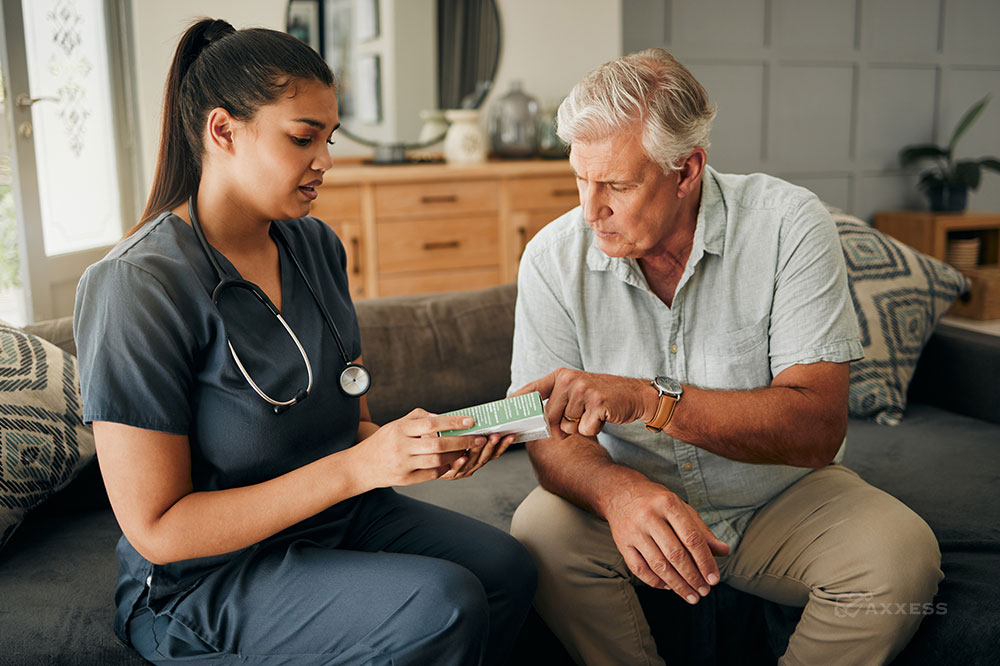
The Centers for Medicare and Medicaid Services’ transition to Home Health Value-Based Purchasing (HHVBP) is set to begin seeing tangible results in 2025. In that year, organizations will see the financial impact of the change that has been a long time coming. Even though HHVBP is in its infancy, many people in the industry are still learning about the complexities and nuances tied to the new payment methodology.
To help the care at home industry understand HHVBP and continue to transition to it successfully, Axxess partnered with consulting firm MAC Legacy for a webinar to demystify the model and offer practical implementation strategies for organizations. The discussion was led by Mike Carr PT, Director of Training and Education for Axxess and Lisa McClammy BSN, RN, COS-C, HCS-D, HCS-O, Senior Clinical Education Consultant with MAC Legacy.
The Importance of HHVBP
As we’ve shared in a previous article, in the HHVBP model home health agencies are scored on 12 different quality measures, which can impact their reimbursement rates from Medicare. The Total Performance Score (TPS), calculated on a scale of 0-100, is a crucial part of the model, with each measure contributing to it through achievement or improvement scores.
Performance in the 2023 baseline year will determine the organization’s VBP payment adjustment for 2025 that could be anywhere between a 5% increase or a 5% decrease. CMS will continue this pattern in the future with the current year’s performance impacting the Medicare payment either positively or negatively two years later.
“[Value-based purchasing data] can be accessed through [Medicare information portal] iQIES,” said Carr. “If you’re not doing that, shame on you and please start as soon as we end the webinar today.”
Carr emphasized the importance of understanding how an agency is performing in comparison to others, stressing that the idea is to be in the uppermost quartile for better reimbursement.
As part of the 2024 Home Health Final Rule, CMS will adjust some of the measures used for HHVBP calculations and introduce a Discharge Functional score that will be based on the GG self-care and mobility items starting in 2025.
McClammy said this will affect what’s being measured and used for VBP payments.
“The truth is it didn’t add anything new to what you’re going to be doing for value-based purchasing, but it definitely made some changes.” She recommends that organizations optimize performance in order to excel under the new model.
Accurate Data and Quality Improvement
Having accurate data and continuous quality improvement programs were major points highlighted by Carr and McClammy. They emphasized the need for home health agencies to understand their data, monitor trends, and implement quality improvement projects to achieve better outcomes under the VBP model.
“Data is your friend,” said Carr. “The more real-time you can get that data, the better.” This is a reason that electronic medical records such as Axxess Home Health can support VBP performance data.
McClammy highlighted the need to understand the risk adjustment factors for the discharge function score which will come into play in 2025.
Completing an accurate OASIS assessment is also important since this GG item data gathered will be used to calculate the discharge functional score, which will impact payment.
Reducing hospitalizations will also be important because of the impact they will have on the organization’s overall VBP score.
“Potentially preventable hospitalization is 26%,” said McClammy. “It’s extremely important if your patient goes to the hospital.”
Patient Engagement Matters More Than Ever
Customer service and patient concerns will also be a major factor in an organization’s VBP score. Carr stressed the need for communication with patients about the CAHPS survey they will receive after discharge.
“It’s legitimate to show the staff what a CAHPS survey looks like,” he said, adding that using the same terminology in the survey during conversation at each visit would help patients understand the questions better.
McClammy agreed and said organizations should respond to any patient concerns in a timely manner to create as pleasant an experience as possible.
“We want to make sure that they’ve had good customer service and that their issues were answered and taken care of.”
Carr also pushed for organizations to remember that with HHVBP, it’s important to remember that this is a marathon, not a sprint.
“We still have many years of value-based purchasing ahead of us so continue to focus on your quality and make those performance improvement projects important.”
To watch the full webinar on HHVBP, click here.
Axxess Home Health, a cloud-based home health software, streamlines operations for every department while improving patient outcomes.

